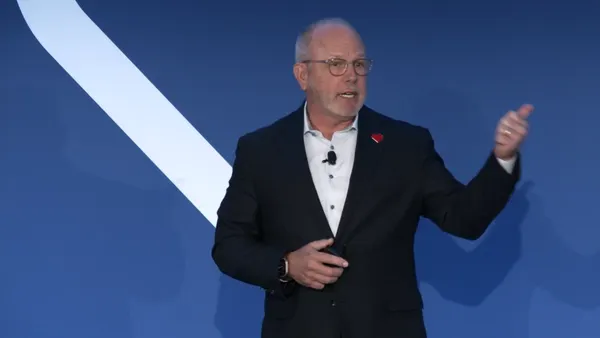Healthcare has always been a highly dynamic industry. But leaders today face an environment in which marketplace, technology, and economic shifts occur on a near-weekly basis. To ensure stability, healthcare leaders must constantly prepare for changes in funding, regulations, and trade environments that affect Medicare, Medicaid, care delivery, compliance, drug pricing, programs, and supply costs.
How can healthcare leaders equip themselves for today’s challenges and tomorrow’s opportunities? Here’s how to adopt a proactive mindset and balance short- and long-term financial objectives in the healthcare industry.
Resilience starts with reliable access to data
In a challenging economic environment, leaders need to work proactively to map out the most appropriate next steps for any situation.
“Without real-time insights into crucial metrics, like KPI trending, productivity, and estimated service line margin, you’re continually on the back foot as you refine your strategy,” explains Geoff Knobloch, National Healthcare Industry Leader at Eide Bailly. “In an environment shifting this quickly, anything slower than real-time is too slow to respond. You simply don’t have time to manually crunch the numbers to make your decisions.”
Without adequate access to data, leaders are forced to work reactively to market changes. This type of inefficient decision-making costs the average Fortune 500 company around $250 million annually — enough to undermine a health system’s financial performance.
Worse yet, leaders risk steering the organization in the wrong direction — for example, investing in technologies that fail to make a meaningful impact on financial performance. “With real-time insights, you gain more visibility into your current pain points and bottlenecks, so each dollar you invest truly drives value for the organization,” Knobloch says.
Be ready to act: The importance of contingency planning
While insights are critical to identify the most appropriate next move, leaders must pair this with contingency planning to be able to work proactively — not just think proactively. “Scenario-planning is critical to success, particularly as shifts in the payor environment and dynamic cost pressures can significantly impact performance,” Knobloch says.
To do this effectively, leaders should adopt a three-stage process to translate insights into action:
Stage 1: Identify potential challenges
Effective contingency planning starts with scenario-mapping: Identifying challenges that could arise, and leveraging technology to forecast how each scenario could impact the organization. From here, leaders can prioritize planning around situations most likely to occur, as well as those posing the largest threat to performance.
Stage 2: Define corresponding Key Risk Indicators (KRIs)
For each scenario, identify KRIs that can serve as early warning signs of potential trouble ahead. This allows leaders to respond to new challenges as quickly as possible — and maximize the organization’s ability to adapt.
Examples of KRIs
|
Stage 3: Outline short- and long-term action plans to address strategic imperatives
With early warning systems in place, leaders should map out the optimal next best steps, identifying the resources and stakeholders required for decision-making and the appropriate actions to take. This exercise also gives leaders the chance to identify opportunities to take preventive action — and address potential challenges before they pose a threat.
Keep long-term goals top of mind
Even though the landscape of healthcare may shift significantly week-to-week, it’s important to balance short- and long-term objectives — such as optimizing your data strategies to support AI and automations — to set your organization up for success.
“While it’s important to plan for the unexpected, long-term planning is just as important as short-term crisis management,” Knobloch says. “Thorough contingency planning can help you identify actions that will address short-term challenges while also supporting your long-term objectives.”
Eide Bailly is here to support your journey
These are turbulent times, and you don’t need to navigate them alone. Eide Bailly’s dedicated healthcare professionals can help you handle the business of healthcare — from tax, audit, financial, technical, digital, strategic, and operational considerations — so you can focus on care and mission.
Learn more about how Eide Bailly can help your organization build resilience and achieve your short- and long-term goals.










